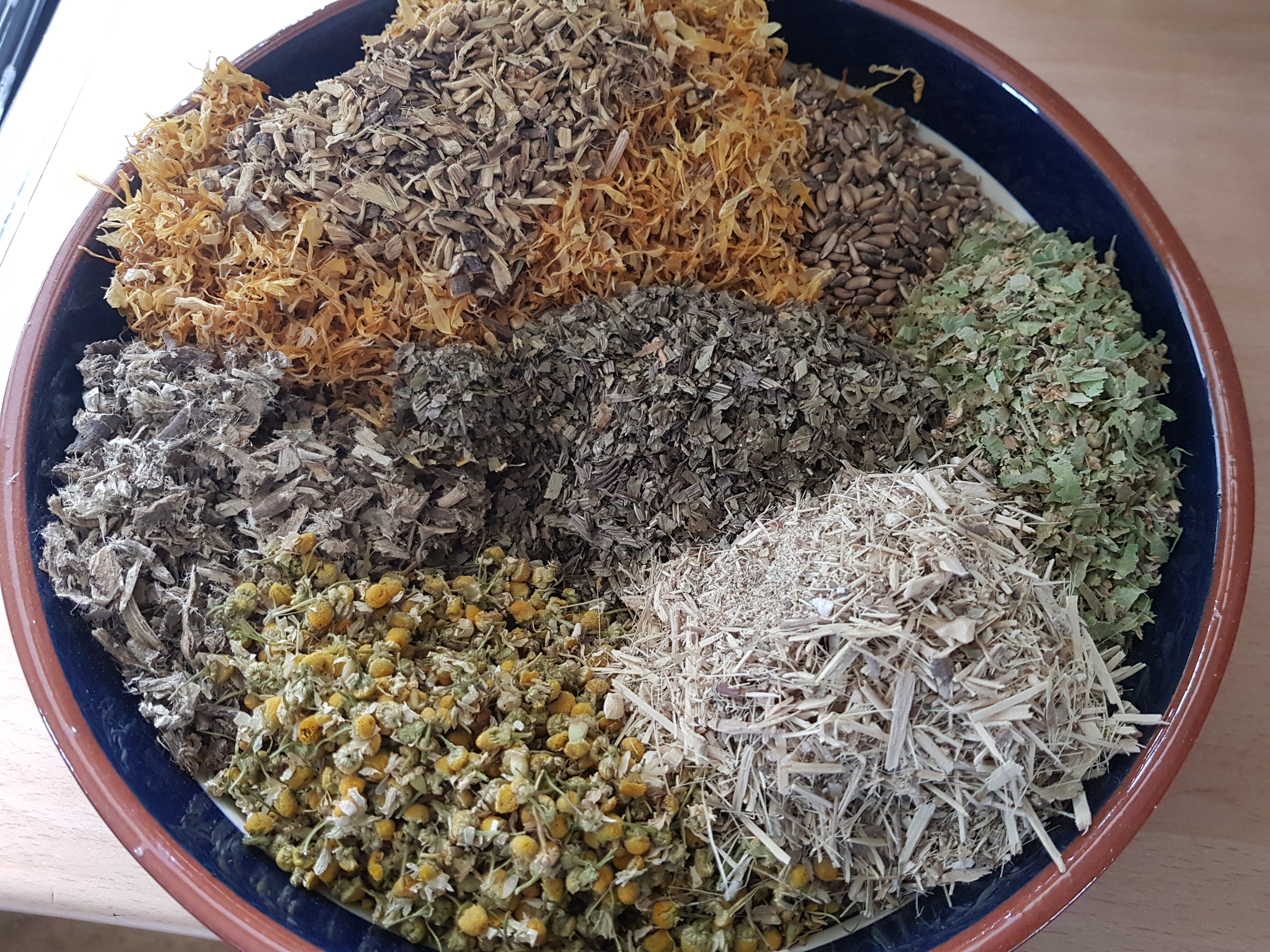Herbal Medicine is the use of plant remedies in the treatment of disease and is considered to be one of the oldest forms of medicine.
The human body has an innate ability to heal itself and plant medicine has been used for thousands of years to help achieve this. Most people are aware of the traditions of Chinese medicine and the long history of these medicines, but we in the Western World have an equally long traditional usage of Western herbal medicines dating back almost 2000 years.
Unlike drugs though, we do not treat conditions. We don’t have asthma herbs or IBS herbs or skin herbs. This kind of approach has very much evolved through the modern use of drugs for specific conditions. Instead, the Medical Herbalist aims to look at the whole person, system by system taking into account their full case history and seeking out the imbalances, weaknesses and deficiencies. Each system feeds into other systems and simply working with one area of the body becomes very symptomatic and long term unsuccessful.
We will then use herbal medicine to heal, repair and restore balance and equilibrium as much as is possible. Plants with a particular affinity for certain organs or systems of the body are used to ‘feed’ and repair those parts which have become weakened. As the body is strengthened so is its power and ability to fight off disease and when balance is restored, health will be regained. In the Bredesen protocol it is very heartening to see mainstream medicine also taking this approach, and recognizing the important role botanical medicine plays.
Most herbalists use polypharmacy. By this I mean we use multiple herbs in one bottle addressing the whole patient at the same time. Every system in the body is connected. It has been shown that “the whole is greater than the sum of its parts†This is called “synergyâ€, where two or more constituents work together to produce a result not obtainable by any of the constituents independently. This is a fundamental tenet of Traditional Herbal Medicine where we combine different herbs and by doing this, this enhances their overall action.
In addition, Medicinal plants contains hundreds if not thousands of unique constituents therefore we always use the whole herbs rather than extracts or active ingredients. This maintains the plant’s natural balance and eliminates side effects or adverse reactions. Herbs have thousands of years of history of being used safely in their whole form and the synergistic effects allows us to regain balance in the body whilst gently but powerfully taking effect.
A wonderful example of the important of using the whole plant is seen in the plant Meadowsweet (Filipendula ulmaria). Meadowsweet contains salicylic acid, which is closely related to aspirin. In isolation this compound can cause internal bleeding from the stomach wall (ulceration – a well-known side effect of aspirin) but Meadowsweet contains compounds called polyphenols, which protect and are healing to the stomach. So used as a whole plant medicine we would actually use this plant to help heal stomach ulcers.

In another study trying to identify the single “active†ingredient in certain plants it was decided that berberine was the single most active antimalarial constituent found in 14 different Vietnamese medicinal plants. However, flavonoids (another constituent) found in the same plant as berberine were shown to slow resistance to berberine in microbes. This is very important given the problem we have nowadays with antibiotic resistant infection. Thus while berberine might be the most important antimicrobial, if you removed the flavonoids this could result in the plant becoming ineffective due to the malarial microbes becoming resistant to it. It is VITAL that herbal medicine is used in whole plant form. Anything less than this is not true herbal medicine. (https://restorativemedicine.org/journal/synergy-in-herbal-medicines-part-1/)
I always feel it is important to stress this as this is the difference between self-prescribing from over the counter “extracts†of herbal medicine and having a qualified medical herbalist make up an individualized therapeutically targeted, synergistic and accurate prescription.
So in the Bredesen protocol, when a patient arrives and their test shows homocysteine levels or inflammatory markers are high, we use anti-inflammatories specific to whichever system is affected to help reduce this. Simultaneously if it shows that there are gut infections, or high blood sugar levels, we will use appropriate antimicrobial, or anti-infective herbal medicines that work in synergy with the anti-inflammatories. If it is shown that there are signs of neurotoxicity we will add in medicines that nourish and repair the nervous system, and that balance neurotransmitters but that once again, work synergistically with the other herbal medicines. So in the end there could be as many as 8 or 9 different medicines in the one bottle. And the beauty of this is that it is person specific and changes if necessary at every consultation. As the patient changes, so does the prescription. It is a beautiful, safe, dynamic and powerful form of medicine. Welcome to the wonderful world of plant medicine.
